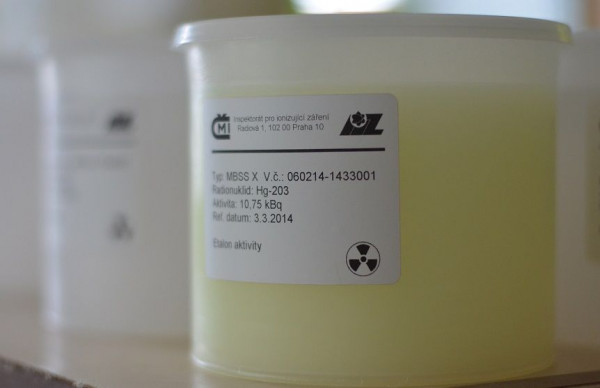Radiochemistry deals mainly with the study of both natural and man-made radioisotopes (radionuclides).
All chemical elements have their radioisotopes. Even the lightest element, hydrogen, has a well-known radioisotope, tritium. The heaviest elements (heavier than bismuth) exist only as radioactive isotopes. All radioisotopes are unstable isotopes of elements.

Radioactivity or radioactive decay is a spontaneous transformation of nuclei of unstable nuclides to other nuclei, during which radioactive radiation is emitted (radiated).
The main types of radiation formed during radioactive decay (transformation) are known as alpha α, beta β, gamma γ.
Examples of radionuclides and their radiation types:
|
Radionuclide |
Radiation type |
||
|
Alpha |
Beta |
Gamma |
|
|
Cesium 137 |
|
X |
X |
|
Iodine 131 |
|
X |
X |
|
Plutonium |
X |
X |
X |
|
Radium |
X |
|
|
|
Strontium 90 |
|
X |
|
|
Tritium |
|
X |
|
|
Thorium |
X |
|
X |
|
Uranium |
X |
|
X |
During the time corresponding to one half-life T½ the activity will decrease to ½, after a period of 2.T½ will decrease to ¼, and so on. After a period of 10. T½ thus the initial activity will decrease to 1/1024.The SI unit of radioactivity is Becquerel (Bq). One Bq is defined as one transformation (or decay or disintegration) per second.
Determination of radionuclides
Radiometric and radiochemical methods as well as ICP/SFMS methods are used in ALS for the determination of natural and artificial radionuclides in all the matrices from the Environment and in food/feed samples. It can be said that we can determine all the common radionuclides from the environment by the combination of the above methods.
High Resolution Gamma-Ray Spectrometry can be usually used without modification, samples with low concentrations of radionuclides are concentrated (evaporation, separation on sorbents or by co-precipitation) prior measurement.
Radiochemical methods are modified according to the matrix composition. For instance, biota and food samples can be incinerated prior to digestion. Samples intended for the determination of 90Sr in the presence of high concentration of calcium must be pre-treated by separation on cation exchange resins.

